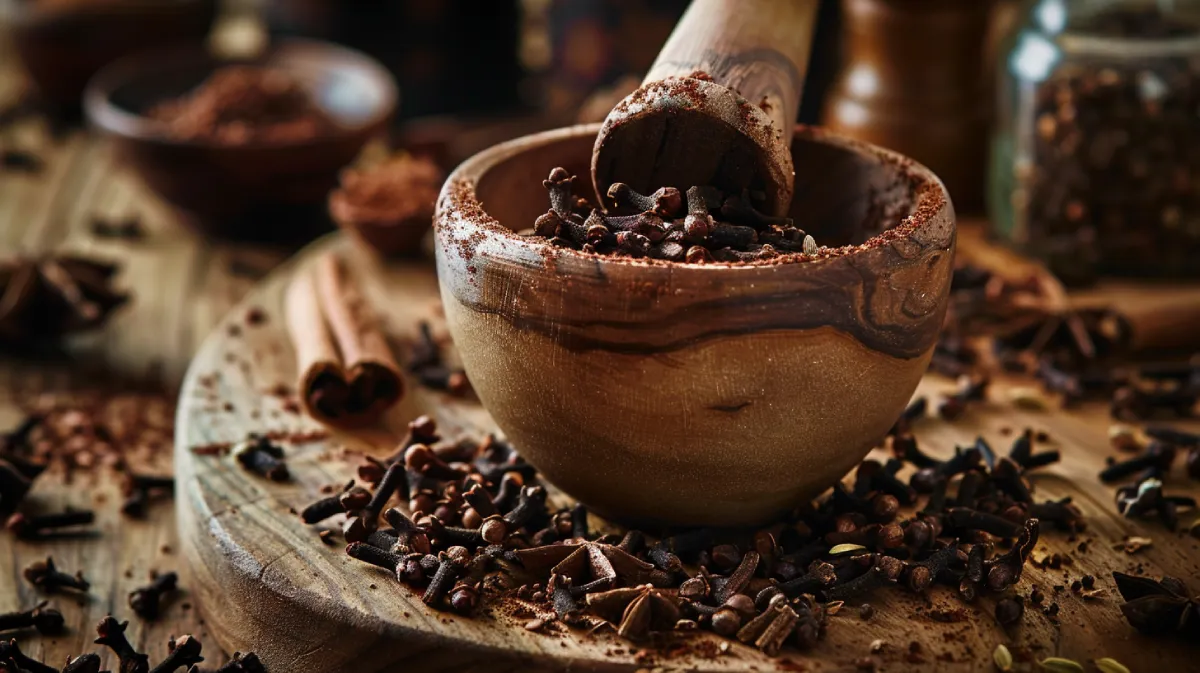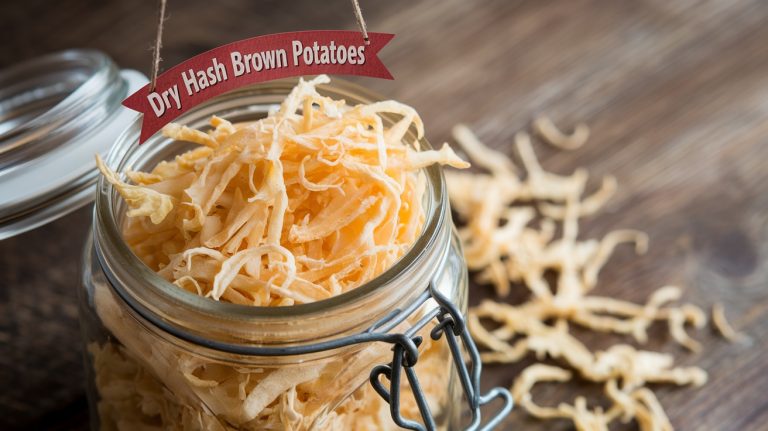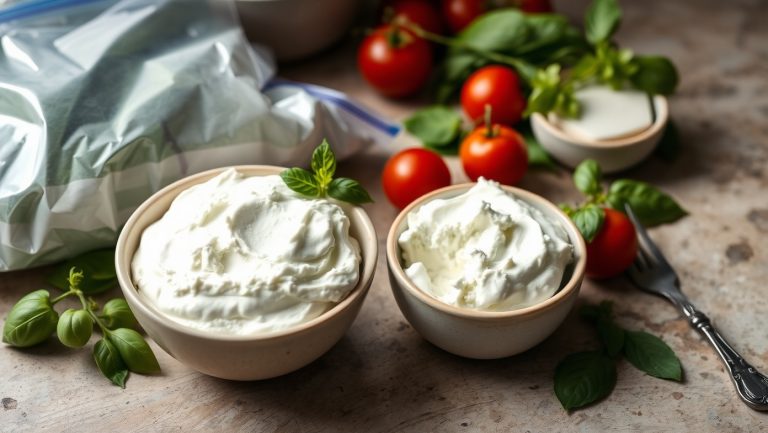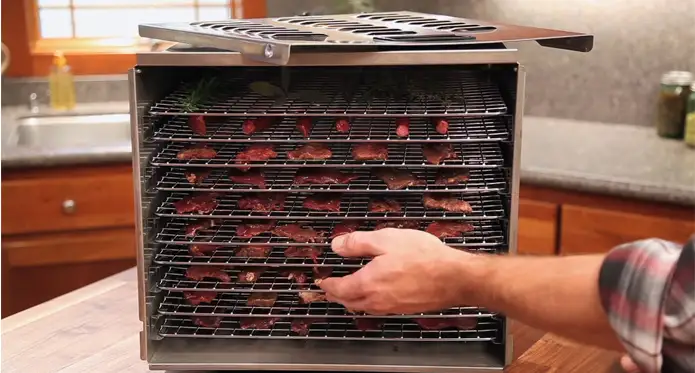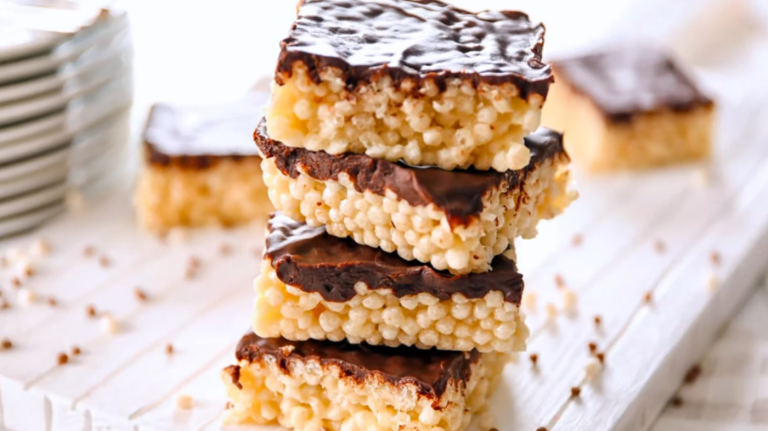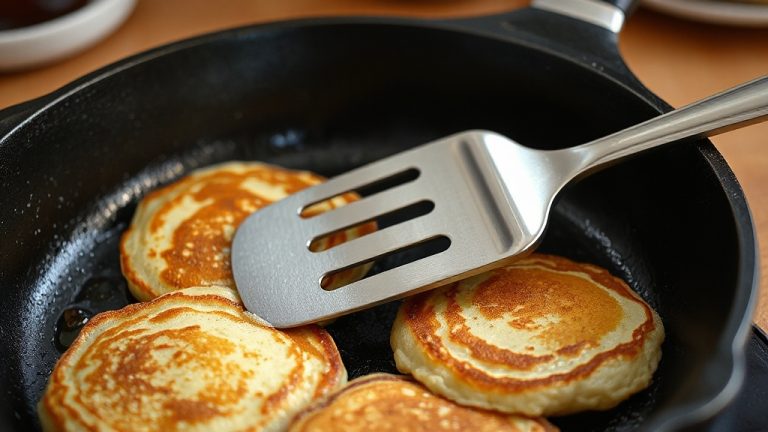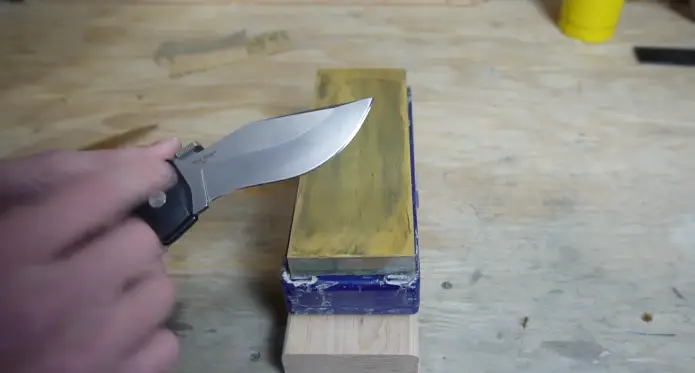How to Grind Cloves: Traditional vs. Modern Methods
To grind cloves, which are the dried, unopened flower buds of the Syzygium aromaticum tree, use a mortar and pestle for a traditional method. Place whole cloves in the sturdy bowl and apply circular motions with consistent pressure.
For a faster approach, use a spice grinder or a coffee grinder. Make sure tools are dry and clean to preserve essential oils. Alternatively, a food processor or microplane can achieve a fine, powdery consistency. Store ground cloves in an airtight container to maintain their aromatic properties.
For more detailed techniques and storage tips, explore the traditional and modern methods further.
Key Takeaways
- Use a mortar and pestle to manually grind cloves for better control over texture and flavor.
- A spice grinder provides a quick, efficient method for a consistent fine powder.
- A coffee grinder can be used for convenience, but clean it thoroughly to prevent flavor transfer.
- For a traditional method, use a hammer and plastic bag to crush cloves manually.
- Store ground cloves in an airtight container to preserve their aromatic properties.
Getting a Better Understanding of Cloves
Understanding cloves begins with recognizing that they’re the dried, unopened flower buds of the Syzygium aromaticum tree. These small, aromatic buds, initially pink before drying, are harvested before blooming to capture their potent flavor and aroma. Native to the Moluccas in Indonesia, cloves have a rich history, valued more than gold at one point due to their unique qualities and versatile uses.
As you explore using cloves, you’ll notice their strong, sweet, and spicy flavor, making them a staple in both sweet and savory dishes. To fully harness their potential, you might consider grinding them. Ground cloves can intensify the flavor of desserts, beverages, savory dishes, marinades, rice dishes, and spice mixes. The process of grinding releases their essential oils, enhancing the aromatic properties.
When preparing to grind cloves, you start with the dried, unopened pink flower buds. These buds are robust and require precise methods to achieve a fine powder. Incorporating ground cloves into your culinary creations allows you to distribute their intense flavor more evenly, offering a consistent and delightful taste experience.
Tools and Equipment
To achieve the best texture for ground cloves, you’ll want to use tools like a mortar and pestle, coffee grinder, or dedicated spice grinder.
Make sure you store your ground cloves in an airtight container to preserve their potent eugenol content.
These methods will help you maintain the integrity of Syzygium aromaticum’s aromatic properties.
Essential Grinding Tools
When it comes to grinding cloves, having the right tools—such as a mortar and pestle, spice grinder, or even a coffee grinder—guarantees you achieve the perfect texture and flavor for your culinary creations. Each tool offers a unique method to grind whole cloves, affecting the final consistency and aroma of the ground product.
If you’re aiming for a traditional approach, a mortar and pestle is ideal. Simply place the cloves in the bowl and use the pestle to crush and grind them into the desired texture. For those seeking convenience, a spice grinder or coffee grinder can be incredibly efficient. These electric devices quickly reduce whole cloves to a fine powder, perfect for recipes requiring a smooth consistency.
Here’s a quick comparison of essential grinding tools:
| Tool | Method |
|---|---|
| Mortar and Pestle | Traditional, manual crushing and grinding |
| Spice Grinder | Electric, efficient, consistent fine powder |
| Coffee Grinder | Electric, multi-purpose, quick and convenient |
| Hammer and Plastic Bag | Manual, place cloves in bag and crush with hammer |
| Dedicated Spice Grinder | Designed specifically for spices, maintains flavor integrity |
Choosing the right equipment guarantees that your ground cloves deliver the best texture and flavor for your culinary endeavors.
Proper Storage Techniques
Storing whole cloves in airtight containers in a cool, dark place guarantees their aromatic properties and strength are preserved. This method prevents the degradation of eugenol, the essential oil responsible for the distinctive aroma and flavor of cloves. Proper storage techniques play an essential role in maintaining the integrity of these botanical gems, making sure they remain at their peak when you’re ready to grind spices for your culinary creations.
To implement effective storage, invest in high-quality spice jars with tight seals. These specialized containers protect the cloves from air, light, and moisture, which can rapidly diminish their quality. Avoid transparent containers, as exposure to light can accelerate the loss of volatile oils. Instead, opt for opaque or dark-colored jars to shield your cloves from harmful light.
Additionally, store your cloves in a cool location, away from heat sources like stoves or ovens. High temperatures can cause the cloves to release their oils prematurely, reducing their strength when it’s time to grind spices.
Grinding Cloves by Hand
To grind cloves by hand, you’ll need essential tools like a mortar and pestle or a sturdy bowl and a heavy object.
Start by using circular motions to crush the clove buds, ensuring an even texture and releasing their aromatic oils.
Hand grinding not only lets you control the consistency but also preserves the clove’s robust flavor and freshness.
Essential Tools Needed
For grinding cloves by hand, you’ll need whole cloves, a sturdy bowl, a heavy object for grinding, and a cloth to cover the bowl. These tools are essential for transforming dried Syzygium aromaticum (cloves) into a finely ground spice, enhancing your culinary creations.
First, let’s break down the essential items:
- Whole Cloves: Make sure you have high-quality, fresh cloves. Their aromatic oils are key to achieving a potent ground result.
- Sturdy Bowl: Choose a bowl made of durable material—granite or marble are traditional choices. This provides a solid base for grinding.
- Heavy Object for Grinding: A mortar and pestle is ideal. The pestle serves as the grinder, allowing you to apply the necessary pressure.
For the grinding process, the cloth serves to cover the bowl, preventing the cloves from scattering. Hand grinding offers a level of control and customization over the grind size that electric grinders can’t match. Using gentle but firm pressure, you can achieve anything from a coarse to a fine ground consistency.
Step-by-Step Guide
Start by placing a measured quantity of whole cloves in a sturdy granite or marble bowl. These materials provide the durability needed for the task of grinding spices.
Utilizing a mortar and pestle, begin the process by gently pressing down on the cloves with the pestle. Use circular motions to crush the cloves, applying consistent pressure to break them down efficiently.
As you grind, periodically check the texture to guarantee even grinding. The essential oils within the cloves will be released, enriching both aroma and flavor. Adjust your technique by either increasing the pressure or altering the motion to achieve the desired consistency.
Patience is key here, as rushing can lead to uneven grind sizes and a less effective release of the botanical compounds.
Grinding cloves by hand not only allows for customization of the grind size but also preserves the freshness and potency of the spice. With practice, you’ll develop an efficient method that suits your culinary needs.
Benefits of Hand Grinding
Hand grinding cloves safeguards their natural oils are conserved, delivering a robust and authentic flavor to your dishes. When you grind cloves manually, you guarantee that the essential oils, which are responsible for their distinctive aroma and taste, remain intact. This method not only enhances the overall sensory experience but also avoids the additives often present in pre-ground spices.
Hand grinding allows for customization of grind size, offering you greater control over the texture and potency of your cloves. This is particularly useful in recipes requiring specific consistencies. Here’s why hand grinding is beneficial:
- Preservation of Freshness: Whole cloves retain their potency longer, and grinding them as needed guarantees you use the freshest spices.
- Enhanced Flavor and Aroma: The volatile oils in cloves are more pronounced when freshly ground, making your dishes more flavorful.
- Avoiding Additives: Hand-ground cloves are free from preservatives and anti-caking agents found in commercial ground spices.
Utilizing traditional methods such as a mortar and pestle ensures the best use of cloves in your culinary endeavors. Remember, proper techniques like using a consistent grinding motion will help maintain quality and achieve the desired texture.
Using Mortar and Pestle
A mortar and pestle, a time-honored tool, lets you grind cloves with precision, enhancing their aromatic and flavor profiles. Unlike using a rolling pin for fresh spices, a mortar and pestle offers superior control, allowing you to achieve the exact texture you desire.
The mortar, usually bowl-shaped, cradles the cloves, while the pestle, a blunt tool, crushes them with focused pressure. Start by placing a small amount of cloves in the mortar. Grip the pestle firmly and use a circular motion to crush the cloves. This method releases essential oils, revealing the full potential of their botanical essence.
You can adjust the coarseness by altering your grinding pressure and motion, ensuring the cloves are ground to your preferred consistency. This tactile process not only connects you to traditional culinary practices but also maximizes the cloves’ flavor and aroma.
Whether you’re preparing a spice blend or enhancing a dish, using a mortar and pestle provides a hands-on approach that modern tools can’t replicate. Embrace this ancient technique to elevate your cooking by grinding cloves with a mortar and pestle.
Spice or Coffee Grinder
Using a spice or coffee grinder offers a quick and efficient method for grinding cloves to a fine consistency. These devices are particularly skilled at handling the tough texture of clove buds, which are the dried flower buds of the Syzygium aromaticum tree. By using a dedicated spice grinder, you guarantee that the essential oils responsible for the cloves’ potent aroma and flavor are retained, delivering a freshly ground product every time.
When opting for a coffee grinder, it’s important to clean the unit thoroughly before and after grinding cloves. This prevents any unwanted flavor transfer from previous coffee grounds, ensuring that your freshly ground cloves remain untainted.
Here’s a succinct breakdown of why a spice or coffee grinder is your go-to tool for this task:
- Consistency: Both grinders produce a uniform grind, essential for even flavor distribution in your culinary creations.
- Convenience: These devices offer a quick and straightforward method, saving you time compared to traditional grinding methods.
- Flavor Preservation: Using a dedicated spice grinder helps preserve the essential oils and volatile compounds in cloves, maintaining their robust flavor.
Incorporating these modern grinding tools into your kitchen arsenal can elevate the quality of your spices, making your dishes even more delicious.
Food Processor Method
For those who don’t have a spice or coffee grinder, a food processor offers an effective alternative for grinding cloves into a fine powder. The sharp blades of the food processor are excellent at breaking down the cloves quickly, guaranteeing you get a consistent texture.
Start by making sure your cloves are completely dry. Moisture can hinder the grinding process and result in a clumpy, uneven mixture. Place the dried cloves into the food processor. Use the pulse function in short bursts to maintain control over the consistency. This method allows you to achieve the desired fine powder without overheating the cloves, which can alter their flavor.
Here’s a quick reference table for the grinding process:
| Step | Action | Notes |
|---|---|---|
| 1 | Dry the cloves | Ensures best grinding results |
| 2 | Place in food processor | Use sharp blades for efficiency |
| 3 | Pulse in short bursts | Control consistency, avoid clumping |
After grinding, it’s essential to clean the food processor thoroughly. Cloves have a potent aroma that can easily transfer to other foods if not properly cleaned. Use warm, soapy water to wash all removable parts, and guarantee they are completely dry before reassembling.
Grater or Microplane Technique
Grating whole cloves with a microplane or fine grater provides a quick and efficient way to achieve a powdery consistency, perfect for enhancing the aromatic intensity of your dishes. This technique allows you to release the essential oils in Syzygium aromaticum, the botanical name for cloves, guaranteeing that your culinary creations are imbued with their characteristic warm and spicy essence.
To effectively use a grater or microplane for grinding cloves, follow these steps:
- Select the Right Tool: Choose a microplane for a powdery texture or a fine grater for a slightly coarser grind. The smaller the holes, the finer the grind you’ll achieve.
- Grate in Small Batches: Grate only the amount of cloves you need, as freshly grated cloves have the most potent flavor. This secures you don’t waste any of this precious spice.
- Utilize Proper Technique: Hold the clove stem side down and gently move it back and forth against the grater or microplane, collecting the grated clove powder beneath.
Using a grater or microplane for grinding cloves is a traditional yet highly effective method, particularly suited for adding a burst of clove flavor to desserts, sauces, and spiced beverages.
Dos and Don’ts
When preparing to grind cloves, there are specific dos and don’ts to keep in mind to secure the best flavor and consistency in your dishes.
First, do measure the cloves before grinding. Precise measurements secure you add ground cloves accurately to your recipes, maintaining the intended balance of flavors.
Don’t overload your grinding tool, whether it’s a mortar and pestle or an electric grinder. Overloading can result in uneven grinding, leaving you with inconsistent particle sizes. Instead, grind in small batches for uniformity.
Make sure you clean and dry your grinding tool thoroughly both before and after use. Any residual moisture or leftover particles can affect the flavor and quality of the ground cloves.
Avoid using a rolling pin to grind cloves. Traditional methods, like a mortar and pestle, provide the controlled pressure needed for a consistent grind, whereas a rolling pin won’t achieve the desired consistency.
Lastly, do store whole cloves in an airtight container placed in a cool, dark location. This preserves their essential oils and secures that when you grind them, they release the maximum flavor.
Culinary Uses
In the world of culinary applications, ground cloves are cherished for their ability to impart a warm, aromatic depth to both sweet and savory dishes. Derived from the dried flower buds of the clove tree (Syzygium aromaticum), ground cloves are a key ingredient in various traditional recipes.
You can elevate your baking by incorporating ground cloves into desserts like gingerbread and pumpkin pie. Their unique flavor profile pairs exceptionally well with sweet ingredients, creating a rich and inviting aroma. For savory dishes, cloves shine when mixed with lamb, apples, and red wines. Their warmth enhances the complexity of these foods, making them more robust and flavorful.
Incorporating ground cloves can be particularly transformative in these culinary applications:
- Masala Chai: Add a pinch of ground cloves to your tea blend for a spicier, more aromatic cup.
- Biryani: Use ground cloves to infuse your rice dish with an extra layer of depth and fragrance.
- Stews and Curries: Enhance the richness of your stews by adding ground cloves, giving them a well-rounded, aromatic finish.
Ground cloves are versatile and essential in creating dishes that are both aromatic and flavorful, making them a staple in any kitchen.
Frequently Asked Questions
How Do You Grind Cloves Without a Grinder?
You can use a mortar and pestle, applying a rotating motion to crush the aromatic flower buds. Alternatively, seal them in a plastic bag and hammer or roll them for a coarse grind, ensuring even pressure.
Can You Just Grind Whole Cloves?
Yes, you can grind whole cloves. Use traditional methods like a mortar and pestle for precision. Grinding releases the aromatic volatile oils, ensuring a fresher, more potent flavor. Adjust the texture based on your culinary needs.
How Do You Crush Cloves Into Powder?
Grinding cloves into powder is like opening a treasure chest of flavor. Use a mortar and pestle or spice grinder, applying gentle pressure in circular motions. Confirm cloves are dry. Toasting enhances their aromatic oils, enriching your dishes.
How to Make Cloves Powder?
Measure your cloves, then use a mortar and pestle to crush them. Apply gentle, firm pressure in a circular motion. This traditional method yields a customizable grind size, enhancing your dishes with potent, freshly ground cloves powder.
Enjoy Freshly Ground Cloves in Your Culinary Creations
In your culinary journey, mastering the art of grinding cloves is a game-changer. Whether you choose the traditional mortar and pestle, a modern spice grinder, or even a trusty microplane, each method reveals the aromatic essence of this botanical marvel.
Remember, precision and patience are your allies. So, don’t hesitate—embrace these techniques and elevate your dishes with the rich, warm notes of freshly ground cloves. Your taste buds will thank you.

